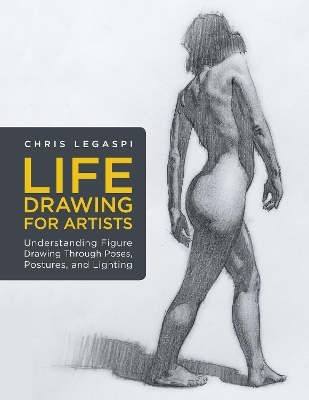Reviewed by annieb123 on
Life Drawing for Artists is a new tutorial and technique guide by Chris Legaspi. Due out 24th Dec 2019 from Quarto on their Rockport imprint, it's 176 pages and will be available in paperback format.
This is a beautifully presented book, well designed and with a logical format. It is aimed at artists who are engaged in, or preparing for, life drawing. The introduction (~13% of the content) provides an overview of tools and supplies, the purpose and usual structure of a session, and the use and maintenance of some simple supplies. The following chapters cover some general fundamentals, processes, perspective, and some exercises for skill building and instructions for further exploration. There is a short author bio, acknowledgements, and a basic index.
Although it's a simple book which allows the learner to utilize widely available materials for skill building, it contains a lot of valuable information, and I could well see this book being used to advantage in a classroom setting. It is aimed at intermediate to advanced artists working mostly in graphite. There are some tutorials showing how to break down references in perspective and transfer them realistically to the page.
A very useful book. It would make a good addition to the artist's home reference library, a classroom or other formal setting, or gift (with supplies) for an artist.
Five stars.
Disclosure: I received an ARC at no cost from the author/publisher for review purposes.
Reading updates
- Started reading
- Finished reading
- 7 December, 2019: Reviewed
